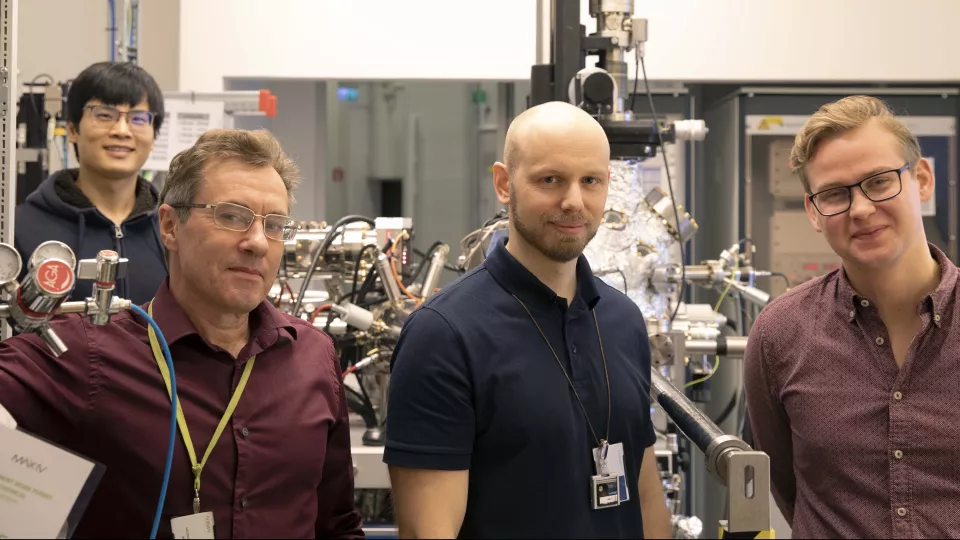In March, a team of Alfa Laval researchers and scientists from Lund University led by Axel Knutsson, Material Specialist at Alfa Laval, came to the MAXPEEM beamline for four-days beamtime. MAXPEEM, one of the soft X-ray beamlines in the 1.5 GeV storage ring, is specialized in surface imaging techniques with structural, chemical, electronic, and magnetic contrasts at spatial resolutions in the nanometer range. The main techniques applied, explains MAXPEEM beamline manager Alexei Zakharov, were micro-X-ray Absorption Spectroscopy (micro-XAS) with spatial resolution below 50 nanometres and high energy resolution micro-XPS.
“The beamline personnel were extremely supportive and professional and gave the team constant support during the experiment. Our questions and wishes were endless, and they answered and met them tirelessly”, said Axel Knutsson.
The experiments focused on the nanometer-thin oxide layer protecting stainless steel from corrosion. The team successfully managed to characterize and image this thin layer of oxide at high temperatures for the first time. The valuable insights the researchers gained on how the oxide reacts at high temperatures will be beneficial for Alfa Laval’s future product development.
"It is very exciting to see Alfa Laval coming to MAX IV to run experiments together with researchers from Lund University", says Magnus Larsson, member of the MAX IV Industrial Relations Office at MAX IV. "Thanks to this collaboration, both the company and Lund University researchers can achieve a deeper understanding of those aspects of material they investigate. These experiments they conducted at MAX IV will hopefully turn into new published research advancements, and ultimately lead to better and more environmentally friendly materials that will benefit society through improved products."
The many opportunities for industrial research at MAX IV
"For a company, joining a research team that knows both MAX IV's techniques and the company's material system is crucial, and it’s one of the best ways to find us", explains Magnus. "In this way, though it might mean spending a little more time on the project, a company gets help along the way from idea to results. Having been involved in such a research collaboration, makes it also easier to come and utilize the techniques at the laboratory yourself if you need measurements or experiments that cannot be published."
To make it easier for companies to find research collaborations and partners linked to MAX IV and ESS, MAX IV and its Industrial Relations Office are developing a new tool called MAXESS industrial arena. Through this tool, a company will be able to find both academic researchers, institutes and private actors who can help them with all kinds of needs.
"The work with MAXESS is in on the way and will be launched later in the year. However, companies can already contact MAX IV Industrial Relations Office for help in finding the right partner".
At MAX IV Laboratory, the aim is to empower academic and industrial users alike with ever more advanced knowledge that can boost scientific progress as well as industrial breakthroughs. The collaboration was handled by MAX IV Industrial Relations Office, and the experiment was partly funded by the Swedish Innovation Agency Vinnova and Stiftelsen för strategisk forskning, SSF.
